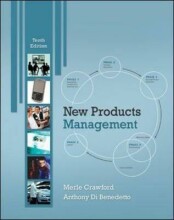Summary: 978-1-137-33364-3 | 9781137333643 | Sven Ove Hansson
- This + 400k other summaries
- A unique study and practice tool
- Never study anything twice again
- Get the grades you hope for
- 100% sure, 100% understanding
Read the summary and the most important questions on 978-1-137-33364-3 | 9781137333643 | Sven Ove Hansson
-
4 Reflecting on the future
-
4.1 The foresight argument
This is a preview. There are 2 more flashcards available for chapter 4.1
Show more cards here -
What is the foresight argument?
It has the form of an attempt to see things the way that we will see them at some later point in time. -
What is the criterion of decision-stability?
Our conviction that the decision was right should not be perturbed by information that reaches us after the decision -
What is hypothetical retrospection?
alternative future developments are identified and comparatively assessed. -
Why is predicted regret not a suitable decision criterion?
- Regret is compatible with the conviction that what one did was morally right (you could regret something even if what you did was morally right)
- There are situations in which a person may feel regret whichever course she takes.
-
4.2 Specifying the branches
-
What does specifying the branches mean?
If hypothetical retrospection is performed to guide a decision, retrospections should be enacted in each of the branches at some point in time when the decision has been made or, subdivisions of future developments should be so constructed that we avoid, as far as possible, comparisons between branches that differ widely in their degrees of uncertainty in issues that are crucial for the decision -
4.3 The value-base
This is a preview. There are 3 more flashcards available for chapter 4.3
Show more cards here -
Why must hypothetical retrospection be based on our actual values?
- We all have a tendency to acquiesce and to content ourselves with what the future brings us.
- It has to be based on the values we have when we deliberate, not on the values we believe that we will have at the future point in time at which the deliberation is hypothetically enacted
-
What did Henry Sidwick mention about our values?
we are looking for will have to be statements about judgements that we would make at a future point in time if our values did not change -
4.4 The decision criterion
This is a preview. There are 3 more flashcards available for chapter 4.4
Show more cards here -
What is a moral dilemma?
a situation in which there is more than one alternative to choose between, but non of them is considered to be morally acceptable. -
What differs hypothetical retrospection from the maximin rule?
According to the maximin rule we should compare alternatives by the worst possible outcome under each alternative, and we should choose one which maximize the utility of the worst outcome. with HR we choose on what gives us the least regret. -
4.5 Conclusion
-
What is an hypothetical retrospection?
an evaluation of a decision or series of decisions in relation to the available alternatives.
- Higher grades + faster learning
- Never study anything twice
- 100% sure, 100% understanding































